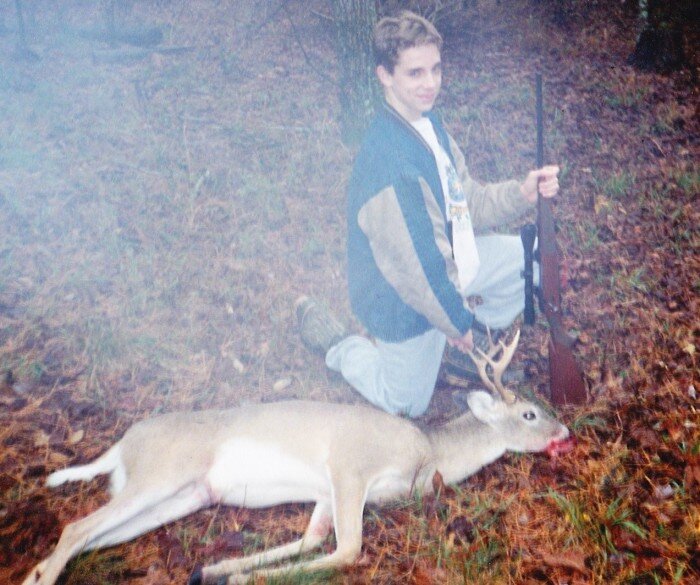Photo 101: Shutter Speed Essentials
A 1/800 shutter was fast enough to stop forward motion of this pheasant, but not the blur of his faster moving wingtips.
I think everyone knows what shutter speed is, but do we all appreciate how to use it for maximum creative effect? And how to use it in conjunction with f-stops?
Everything in photography is more complicated than it might first appear, but taking the time to understand it, to really comprehend it, arms you to take command of your photographic creations. You no longer hope you get a good picture. You create the photographic image you want. So let’s indulge ourselves with some basic shutter speed education that will begin helping us take control of our photographic work.
The basics to remember about shutter speeds is fast ones stop action and slow ones blur action. Now, the rest of the story.
A shutter blocks light from reaching the film/digital sensor. Open it and light streams in. Close it and it’s back to black. The duration of that shutter opening determines how much light strikes or burns onto the sensor (formerly film.) “Burns onto” might be the operative phrase here. Light, regardless its intensity, must strike a digital camera’s sensor for a specific span of time in order to “burn in” an image. The lower the light intensity, the longer it must be allowed to strike the sensor. The higher the light intensity, the less time it needs to burn in its image. And therein lies one of our creative options.
With the mirror held up, this DSLR's horizontal shutter panes are revealed. The speed at which they flip up determines how long light will burn onto the sensor behind them.
Fast shutters speeds (1/500. 1/1000, etc.) capture action because they severely limit the time the reflected light appears on the sensor, freezing it in time. Slow shutter speeds (roughly 1/60 of a second and slower) allow the light bouncing off a moving subject to smear across the sensor.
Fast shutter speeds also prevent image blurring due to camera shake. The slight tremors in your hands can make a boulder look as if it moved at 1/30 second or less, even at 1/250 with a long focal length lens. This varies from shooter to shooter and at various lens powers, which we’ll cover in depth in another Photo 101 blog.
A pronghorn doesn't have to move very fast to blur at 1/15 second shutter speed. Note how even the stationary background has blurred due to camera movement.
In the meantime, let’s answer this obvious question: why not just set all shutters to 1/1000 second or faster and avoid all the motion blurring? Let us count the ways:
Because you might not want to freeze the motion of your subject.
Because the light isn’t always bright enough for 1/1000.
Because your lens aperture is too tiny.
Because your ISO speed is too slow.
Any combination of these.
Now we’re making the connections. In photography, shutter speed, aperture size and ISO number are interrelated. Each impacts the quantity of light that burns an image onto the camera’s sensor. Aperture (f-stop setting) does this by varying the diameter of the diaphragm in the lens. Shutter speed does this by limiting the time light can stream in. And ISO does it by changing the sensor’s sensitivity to light. Learning how to manipulate these three is a big part of photographic creativity.
Stated plainly, if low light levels mandate longer exposures and you want to stop action with a fast shutter speed, you must maximize your aperture and/or crank up your sensor sensitivity (set a higher ISO number.)
Pronghorns run fast, but not fast enough to escape a shutter speed of 1/2000.
We’ll detail ISO in our next Photo 101 blog. For now, just think about light pouring through various sized apertures in your lens diaphragm (f-stops) and the duration of shutter openings needed to allow sufficient accumulation of that light. If you reduce the aperture size, you must increase the time the shutter remains open, risking motion blur from the subject or your own hands. You can fix the shaky hands problem by setting your camera on a tripod, bean bag or table top. In most cases you can’t fix the moving subject, which is why it’s important to learn more about ISO speeds, f-stops and this whole exposure relationship triad. Stick with us and we’ll do that.
This creative dance between aperture size (f-stop) and shutter speed gives us artistic options. We can choose a fast shutter speed to freeze motion, rendering subjects sharp. But we can also blur action to create mood or showcase active subjects with an unusual, more dramatic “look.”
If our goal is to capture a fast subject sharply, we must sacrifice depth-of-focus (use a wide aperture, i.e. a small f-stop number like f-4 or f-2.8) in order to maximize shutter speed. If our goal is to render foreground subjects sharp AND backgrounds sharp, we can sacrifice shutter speed and take advantage of the increased depth-of-focus of a small aperture (large f-stop number like f-16 or f-22.)
In our next blog, we’ll outline how ISO speed influences shutter speed and aperture. Check in next Friday.
At 1/4 second shutter speed, moving water blurs into a pleasing, milky smear.
A shutter speed of 1/60th isn't fast enough to completely stop moving water, but it renders drops and waves more clearly than slower speeds.
# # #

















